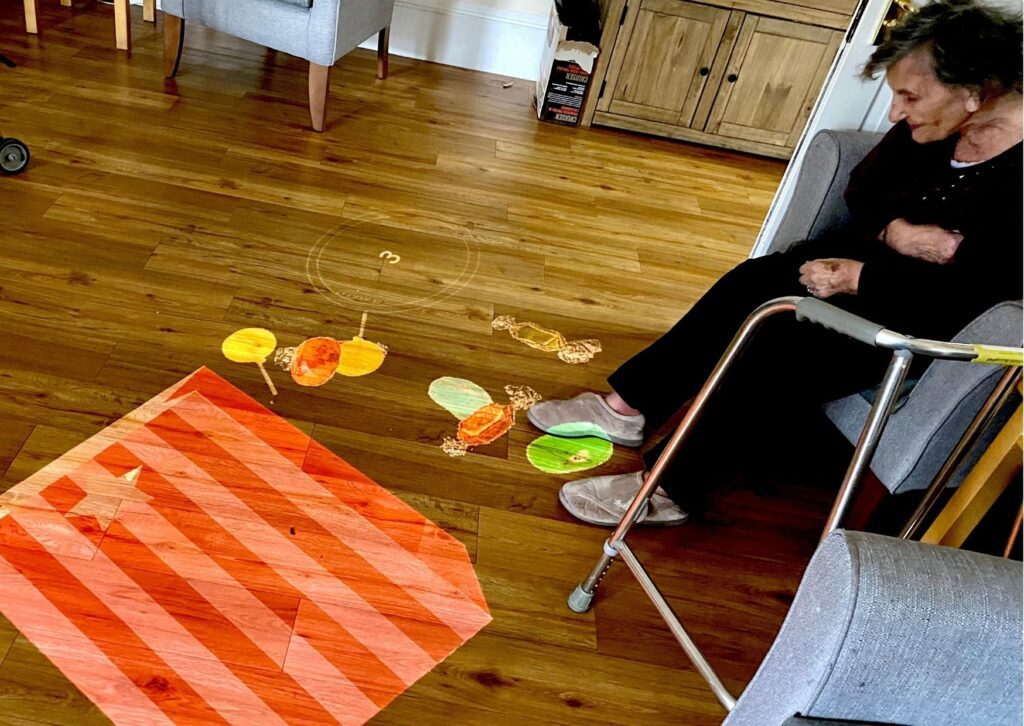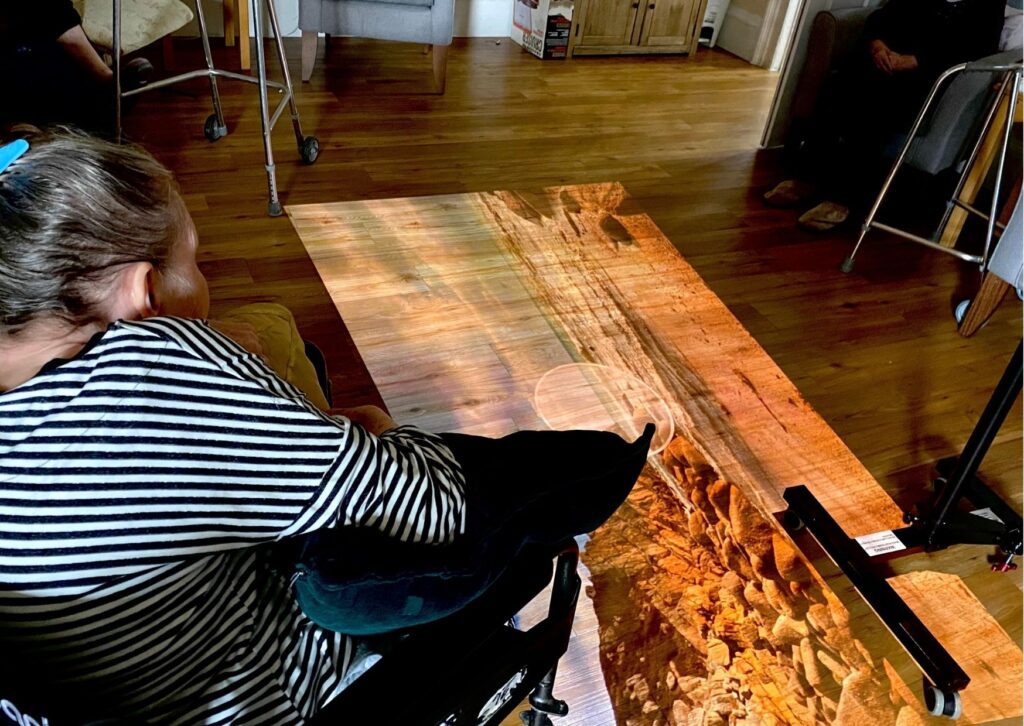There are lots of activities that can be done with students with autism. One of these activities includes the Happiness Programme, interactive light technology that features over 80 inclusive games and activities that cater to a wide variety of people.
We spoke to Lisa, Well-Being Lead at Eastham Care (a Runwood Home) to understand the impact the Happiness Programme has had on their dementia residents.


Who are you caring for in your role as Well-Being Lead at Eastham?
We’re a residential home with 23 residents, the majority of which are living with dementia. Around half of those are mid-to-late stage and are experiencing difficulties with communication and movement.
How has the Happiness Programme helped at Eastham?
When a new resident joins us, we make every effort to understand what they enjoy and tailor their activities accordingly. We offer a diverse range of activities to help us achieve that and the Happiness Programme has really added to that. There’s a large number of games to choose from and there’s something to suit everyone, both in terms of interest/hobby and care need – from more active or cognitive games to those that are more music based or sensory.
Each week we have a number of large group sessions where we get all the residents sat around in a communal space, close the curtains and project onto the floor. Whether it’s kicking a football, or walking through leaves, this is a great opportunity to be social.
We’ve just updated the magic table 360 to access the new Christmas update. It’s been amazing and sparked so much conversation about Christmas. The residents have been really engaged with the content and it’s provided a lot of focus.
I’ve really observed a calming and relaxing effect on the residents. This is something even the residents have commented on themselves.
I’ve also used the personalised content feature “Happy Memories” to upload recent photos we’ve taken within the home. The residents have really loved colouring in photos taken just a week or two before, where they recognise themselves and others.
Is the Happiness Programme useful as a therapeutic intervention?
Yes – it’s definitely helped reduce stress and tension and the staff have often commented about how calm everyone feels. It helps to create a positive, relaxed atmosphere.
How are you using the games with the residents?
One of the techniques I use the most is to use the sensory games and videos as an opportunity to tell a story and to take the residents with me. We might be watching the woodland walks video and I’ll ask them what they think is at the end of the path. Some will say “a lake”; others “a beach”. Then, we’ll change games and we’ll suddenly be at the beach. It’s a wonderful tool to explore and to get them using their imagination.
Has there been an impact on the staff?
Yes, definitely. Some of the larger group sessions I run really helps to free up staff. This gives us, as a team, more time to do other tasks. The staff have also really enjoyed using the magic table 360 with the residents – it’s not just the residents who benefit from some of the games!
Not a member of the happiness programme?
The Happiness Programme is a first-of-its-kind initiative helping to change the lives of people living with cognitive challenges. We use interactive light technology to provide meaningful activities for residents and patients in care homes and care settings. For more detail on what the Happiness Programme is and how it’s helping care venues across the UK, visit our getting started page.
Alternatively, jump to our dementia, learning disability, rehabilitation and NHS pages for more specific detail on how it’s helping care homes like Barchester and HC-One as well as hospitals and local authorities such as St George’s Hospital, London and Westminster and South Kensington Council.
For anything else, you can contact us here too.

Copyright © 2021 Social-ability. All Rights Reserved.